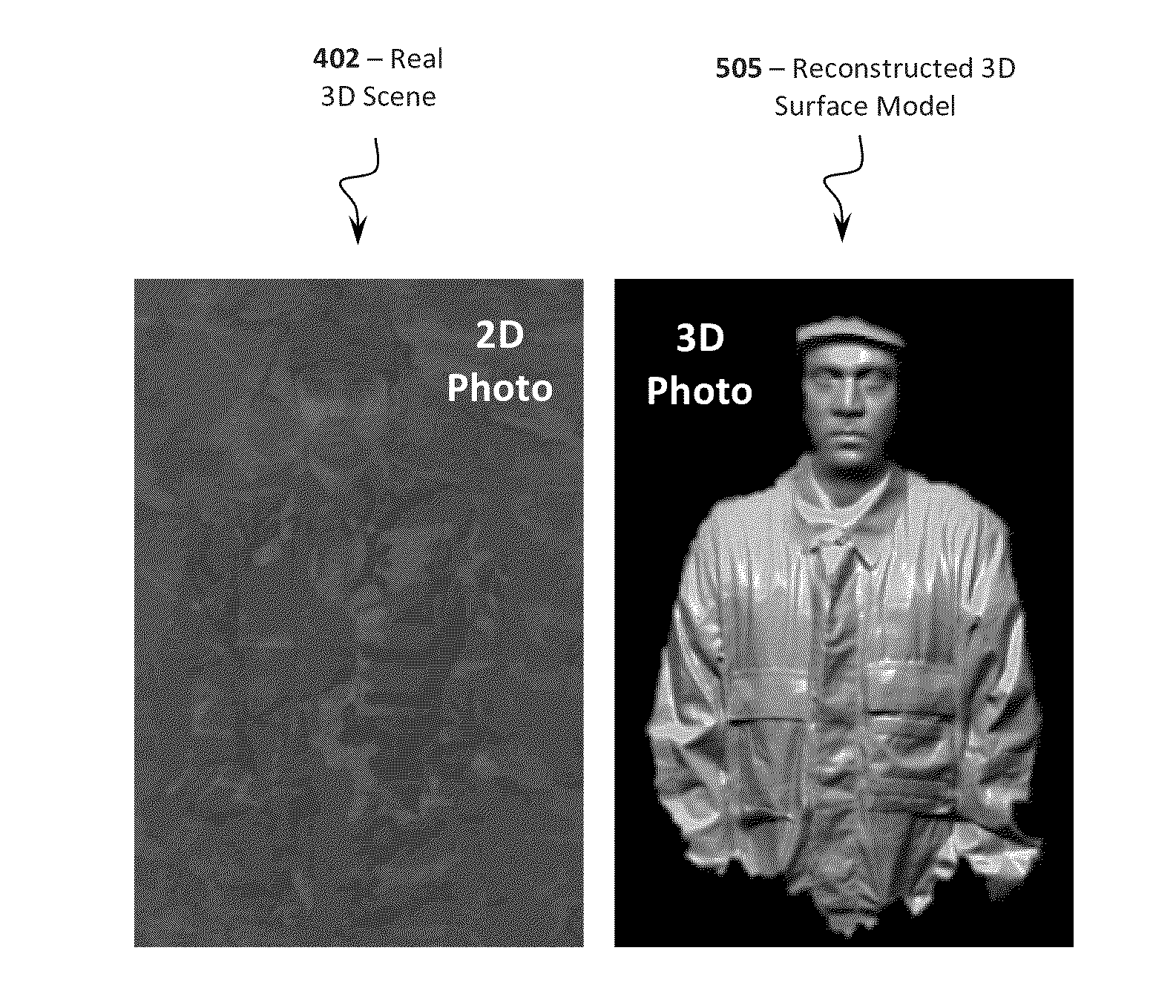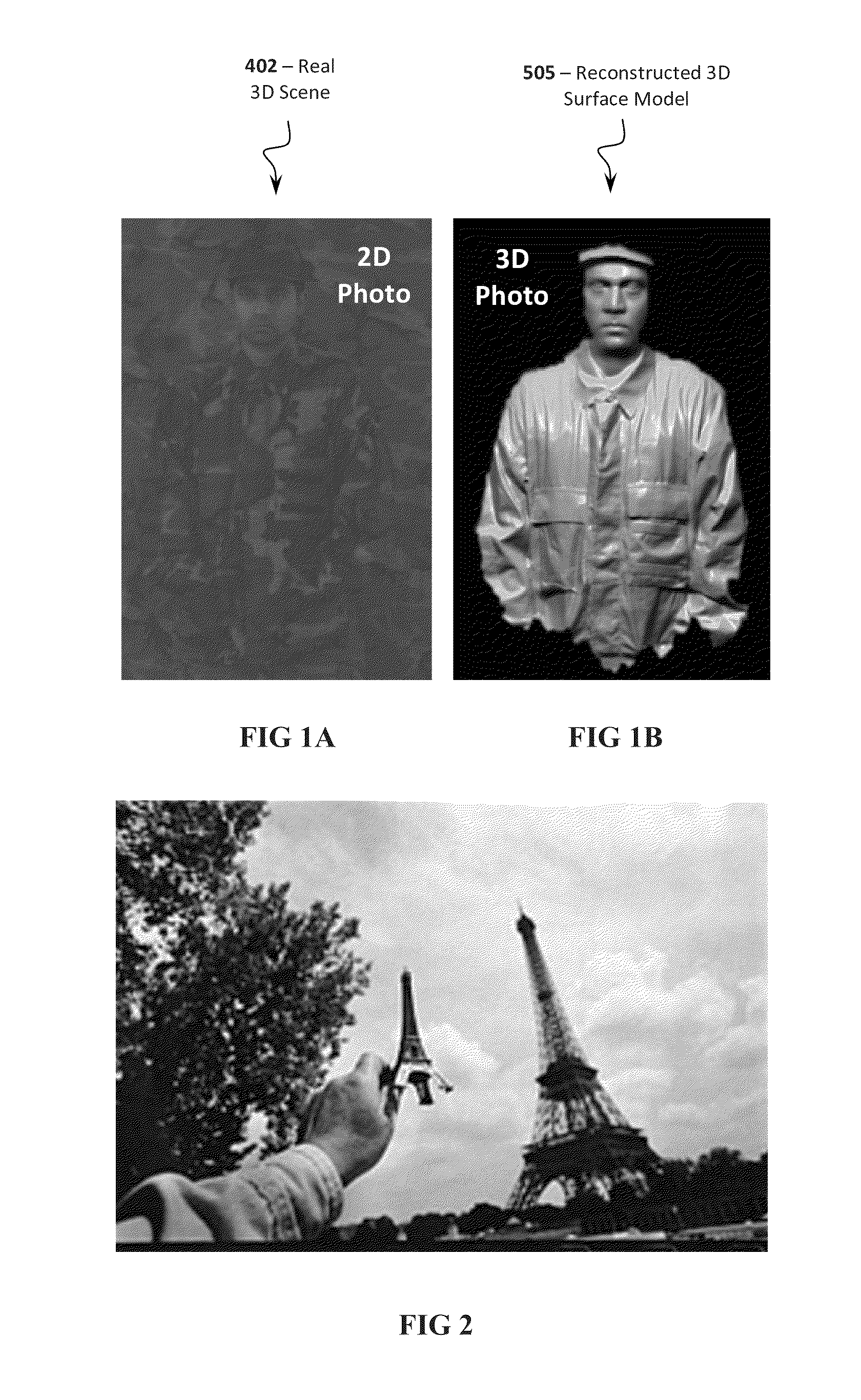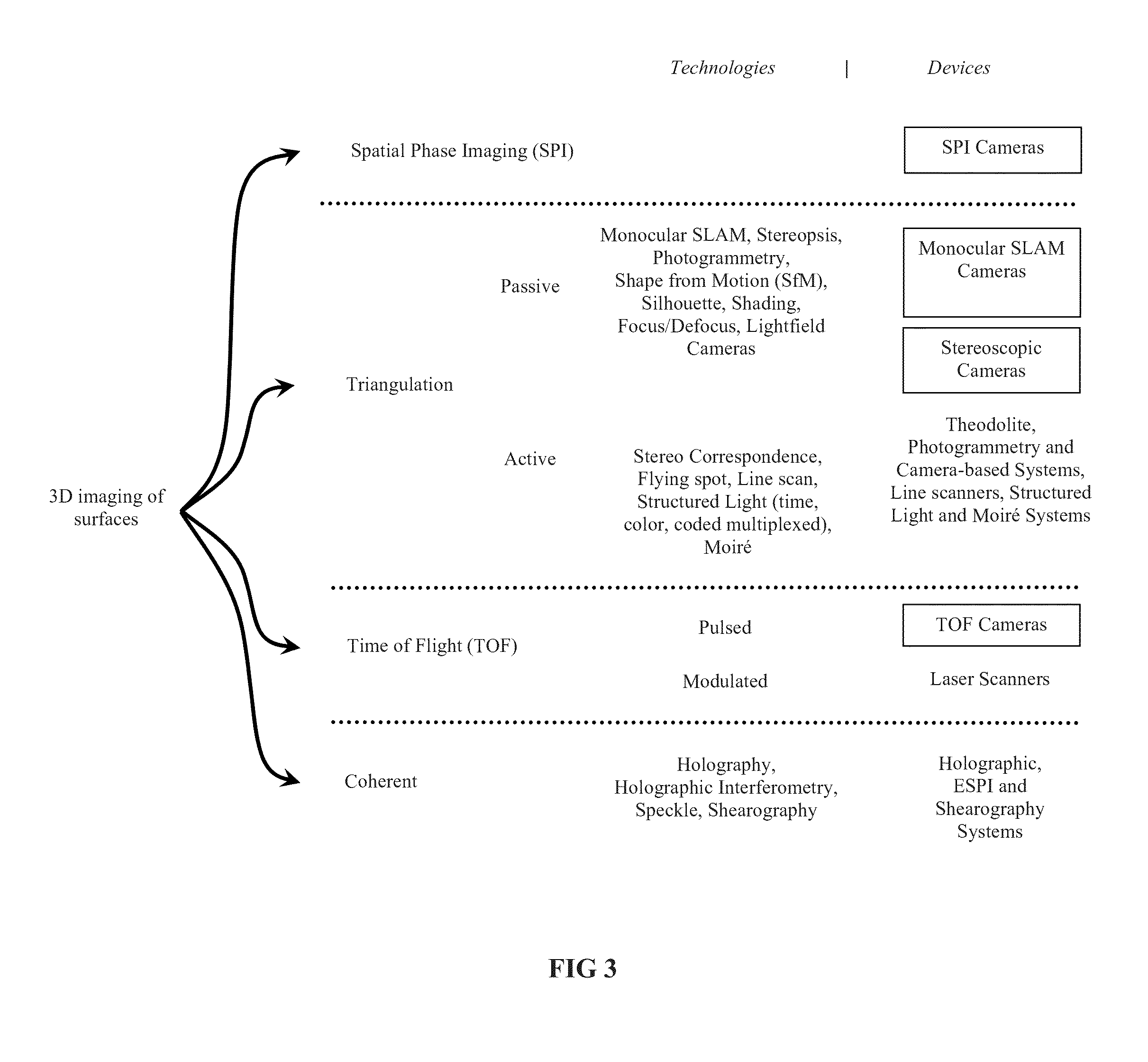Visual cognition system
a visual cognition and visual cognition technology, applied in the field of 3d imaging, can solve the problems of difficult automatic systems to understand the state of the scene, 2d video cameras struggle to provide a high level of visual cognition, and rigorous comparisons are beyond the scope of this application
- Summary
- Abstract
- Description
- Claims
- Application Information
AI Technical Summary
Benefits of technology
Problems solved by technology
Method used
Image
Examples
Embodiment Construction
Glossary of Terms
[0047]For ease of reference, the following terms are provided:
[0048]Camera. A device that senses electromagnetic energy to create images.
[0049]Characteristic. An attribute of an entity that can be represented. Examples of characteristics include length, color and shape.
[0050]Class. One or more characteristics used to categorize entities.
[0051]Display. A device that stimulates human senses to create notions of entities such as objects and scenes. Examples of displays include flat panel TVs and speakers.
[0052]Entity. Anything that can be represented.
[0053]Image. Characteristics of electromagnetic energy at one or more locations in a scene at a moment in time. Examples of images include hyperspectral image cubes, spatial phase images, and pictures.
[0054]Location. Position and / or orientation characteristics of entities in a scene.
[0055]Model. A representation of an entity that is objective.
[0056]Medium. Material of uniform composition that fills the space between object...
PUM
 Login to View More
Login to View More Abstract
Description
Claims
Application Information
 Login to View More
Login to View More - R&D
- Intellectual Property
- Life Sciences
- Materials
- Tech Scout
- Unparalleled Data Quality
- Higher Quality Content
- 60% Fewer Hallucinations
Browse by: Latest US Patents, China's latest patents, Technical Efficacy Thesaurus, Application Domain, Technology Topic, Popular Technical Reports.
© 2025 PatSnap. All rights reserved.Legal|Privacy policy|Modern Slavery Act Transparency Statement|Sitemap|About US| Contact US: help@patsnap.com



